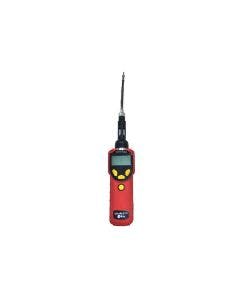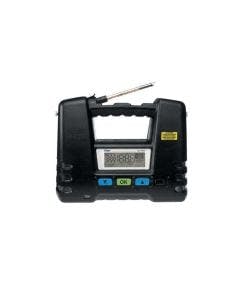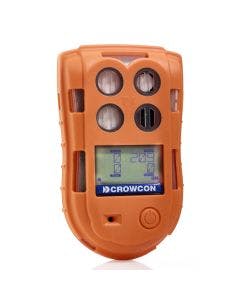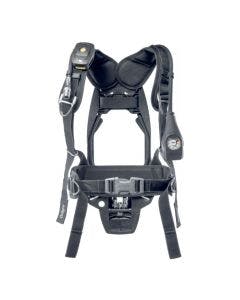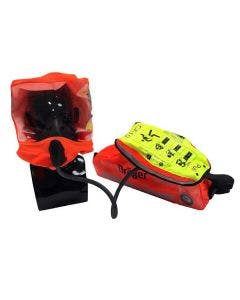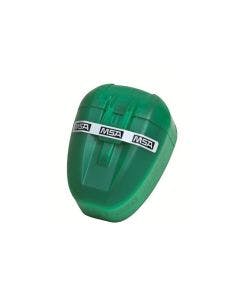Dangers and Hazards During Shutdowns, Turnarounds, and Outages

Dangers and Hazards During Shutdowns, Turnarounds, and Outages
Shutdowns, turnarounds, and outages (STOs) are planned events that involve the temporary shutdown of an oil and gas facility, such as a refinery or chemical plant. These events are necessary for maintenance, repairs, upgrades, and inspections to ensure the facility operates safely, efficiently, and effectively. However, STOs also present several hazards and dangers that can pose risks to the workers, the environment, and the surrounding community.
What gases and hazards are found in Shutdowns, Turnarounds, and Outages?

Fire and Explosions
The oil and gas industry deals with flammable and explosive materials, such as oil, gas, and chemicals. During STOs, the risk of fires and explosions increases due to the potential for leaks, equipment failure, or human error. Hot work activities such as welding, cutting, and grinding are common during STOs. These activities can generate sparks or heat that can ignite flammable materials, leading to fire or explosion. During STOs, ventilation systems may be shut down, resulting in a build-up of flammable gases or vapours. If these gases or vapours are not properly controlled, they can ignite and cause a fire or explosion.
Chemical Exposure
The oil and gas industry uses a variety of chemicals, such as acids, solvents, and caustics. During STOs, workers may be exposed to these chemicals, posing risks of chemical burns, respiratory problems, and other health issues. Asbestos was commonly used in insulation and other building materials, and many older facilities still contain asbestos-containing materials (ACMs). Workers may be exposed to asbestos fibres when these materials are disturbed during maintenance or repair work, which can lead to lung cancer, mesothelioma, and other serious respiratory diseases. To minimize the risk of chemical exposure during shutdowns, turnarounds, and outages, it's essential to have a comprehensive safety plan that includes training for workers, appropriate personal protective equipment (PPE), and proper handling and storage of chemicals.

Confined Spaces
Many of the tasks involved in STOs require workers to enter confined spaces, such as tanks, vessels, and pipelines. These spaces can pose risks of suffocation, asphyxiation, and explosions due to the accumulation of flammable or toxic gases.
Many of these maintenance activities occur in confined spaces, posing various risks to workers' health and safety. Here are some of the confined space risks during STOs:
- Oxygen deficiency or enrichment: Confined spaces often have limited ventilation, which can cause oxygen concentration to drop or increase beyond safe levels. Oxygen-deficient or enriched atmospheres can cause dizziness, confusion, and even loss of consciousness, leading to severe accidents.
- Toxic atmospheres: Confined spaces can contain hazardous substances such as gases, fumes, and dust that can accumulate to toxic levels. Exposure to toxic atmospheres can cause respiratory problems, eye irritation, and other health issues.
- Fire and explosion hazards: Confined spaces can pose a fire and explosion risk due to the accumulation of flammable or combustible substances, such as fuel vapours or dust. Ignition sources, such as welding or cutting tools, can trigger a fire or explosion in such environments.
- Engulfment hazards: Confined spaces may contain liquids, solids, or loose materials that can engulf workers and suffocate them. Workers may also be trapped by collapsing structures or machinery, leading to injury or death.
- Communication difficulties: Communication in confined spaces can be difficult due to noise, poor visibility, and the risks of engulfment.
To minimize these risks, STO organizers must develop and implement a confined space entry program that includes thorough risk assessments, proper worker training, and appropriate personal protective equipment (PPE) and safety devices. It is also important to have proper communication and emergency response procedures to ensure workers' safety entering confined spaces.
Heavy Equipment
STOs often require heavy equipment, such as cranes, lifts, and trucks. Workers may be at risk of injury from these machines, particularly if they are not properly trained or supervised. Some heavy equipment risks during STOs include:
- Struck-by accidents: Workers can be struck by moving heavy equipment, such as cranes or forklifts, causing serious injuries or death.
- Crush injuries: Heavy equipment can crush workers against walls or other objects, causing severe injuries or fatalities.
- Falls: Workers can fall from heavy equipment, such as scaffolding or elevated platforms, causing serious injuries or death.
High-Pressure Equipment
The oil and gas industry uses high-pressure equipment like pipelines, valves, and pumps. During STOs, workers may need to work on this equipment, which can pose risks of injury from high-pressure releases or explosions. Some of the high-pressure equipment risks during STOs include:
- Explosions and ruptures: High-pressure equipment can explode or rupture if pressure is released, causing serious injuries or fatalities.
- Pinch points: Workers can get caught in pinch points, such as valves or flanges, while working on high-pressure equipment, causing serious injuries or amputations.
- Noise exposure: High-pressure equipment can produce loud noise levels, which can cause hearing damage if proper hearing protection is not used.
To minimize the hazards and dangers during STOs in the oil and gas industry, companies must implement comprehensive safety programs, including training, risk assessments, safety procedures, and equipment inspections. Workers must be properly trained and equipped with the necessary personal protective equipment (PPE) to protect them from hazards such as chemical exposure, high-pressure equipment, and confined spaces. Regular safety audits and inspections must also be conducted to identify and mitigate potential hazards and dangers.
Products for Detection
Our recommended multi-gas detectors, some of which can be used for confined space pre-entry, personal protection, or area monitoring. For confined space pre-entry checks, it is recommended that a pumped monitor is used. Using a pumped monitor allows a sampling tube to be fed into the confined space from the outside, confirming workers are safe to enter.
Products for Protection
Our recommended personal protection equipment for workers or contractors involved in STOs. With the possibility of many hazardous gases or chemicals it's important workers are provided with a sufficient level of personal protection.

